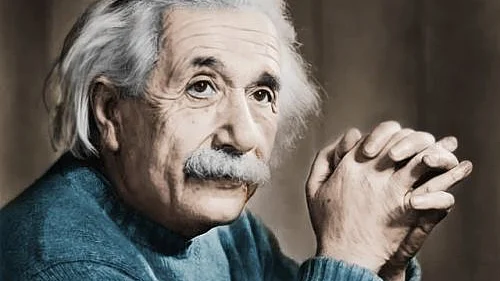One hundred years of triumph of Einstein’s general theory of relativity
The great scientist, Albert Einstein, was surprised at massive response to his discovery of the general theory of relativity

One hundred years ago on 6 November 1919, the news desk of Times, London, was dazed, stupefied and delighted when the text of announcement from the joint meeting of the Royal Society of London and the Royal Astronomical Society said that measurements taken at the solar eclipse on 29 May 1919 confirmed Albert Einstein’s new theory of relativity, The General Theory of Relativity, stood verified. The lead story next day in bold letters, was captioned ‘Revolution in Science’ with a sub-heading, ‘Newtonian Ideas Overthrown’.
A few days thereafter, New York Times carried a six-tiered headline, somewhat unthinkable for a science story, ‘Lights are all Askew in Heavens’ , followed down the line with cross headings ‘Einstein’s Theory Triumphs’ , ‘Stars Not Where They Seemed, or Were Calculated to Be, But Nobody Need Worry’.
There have been several major experiments and projects the world over in greater confirmation of both of Einstein’s theories of relativity, such as Gravity Probe B at the Stanford University, USA, and identification of a dead star, known as a white dwarf, orbiting a red dwarf in a binary system, by NASA's Kepler telescope. A new window opens up in an indefinite perspective,
English astronomers Sir Arthur Eddington and Frank Dyson, the two pace-setting experimental scientists, organised astronomical expeditions to the island of Principe off the west coast of Africa and to Sobral, Brazil, respectively, on that crucial day and studied the data and observations for five months before conveying the incredible to the two apex societies.
Sir Arthur was one of the few people in England to have fathomed into Einstein’s theory, and recognized the importance of putting it to the test. Incidentally, like Einstein he too was uncompromisingly opposed to war and fascism.
Editors of The Times made no secret of their own ignorance but snapped fingers on the scientists themselves. “We cannot profess to follow the details and implications of the new theory with complete certainty,” they wrote on November 28, 1919, “but we are consoled by the reflection that the protagonists of the debate, including even Dr. Einstein himself, find no little difficulty in making their meaning clear.”
For readers of that day’s Times, Einstein’s own explanation, translated from German, was published under a caption: ‘Einstein on his Theory’. The most comprehensible paragraph was the final one, in which Einstein jokes about his own “relative” identity: “Today in Germany I am called a German man of science, and in England I am represented as a Swiss Jew. If I come to be regarded as a bête noire, the descriptions will be reversed, and I shall become a Swiss Jew for the Germans, and a German man of science for the English.”
Astonishing as it may seem, the great scientist himself confessed in 1942: “I never understood why the theory of relativity with its concepts and problems so far removed from practical life should for so long have met with a lively, or indeed passionate, resonance among broad circles of the public. What could have produced this great and persistent psychological effect? I never yet heard a truly convincing answer to this question.”
Anyway, the perceptional reality is that the ‘General Theory of Relativity explains gravity based on the way space can 'curve', or, to be more precise, associates the force of gravity with the changing geometry of space-time. Einstein had published the paper in 1915, ten years after he formulated the ‘Special Theory of Relativity’ which applied a universal speed of light to the assumption that the laws of physics stay the same inside any given frame of reference. Nonetheless, even today very few people claim to fully understand it, although the esoteric theory keeps sparking the scientific community.
The importance of general relativity lies in the mathematical equations, the most accurate-till date way to predict gravitational interactions negating Newton’s methods. As he worked out the equations for his general theory of relativity, Einstein realized that massive objects caused a distortion in space-time. Imagine setting a large body in the center of a trampoline.
The body would press down into the fabric, causing it to dimple. A marble rolled around the edge would spiral inward toward the body, pulled in much the same way that the gravity of a planet pulls at rocks in space. A further confirmation was in the gradual shifting of the orbit of Mercury over time, due to the curvature of space-time around the massive sun.
Small wonder, the greatest physicist of the post-Newtonian era was not considered for Nobel Prize for any two of his theories of relativity but awarded for his discovery of the Law of Photo Electric Effect in 1921.
Follow us on: Facebook, Twitter, Google News, Instagram
Join our official telegram channel (@nationalherald) and stay updated with the latest headlines
